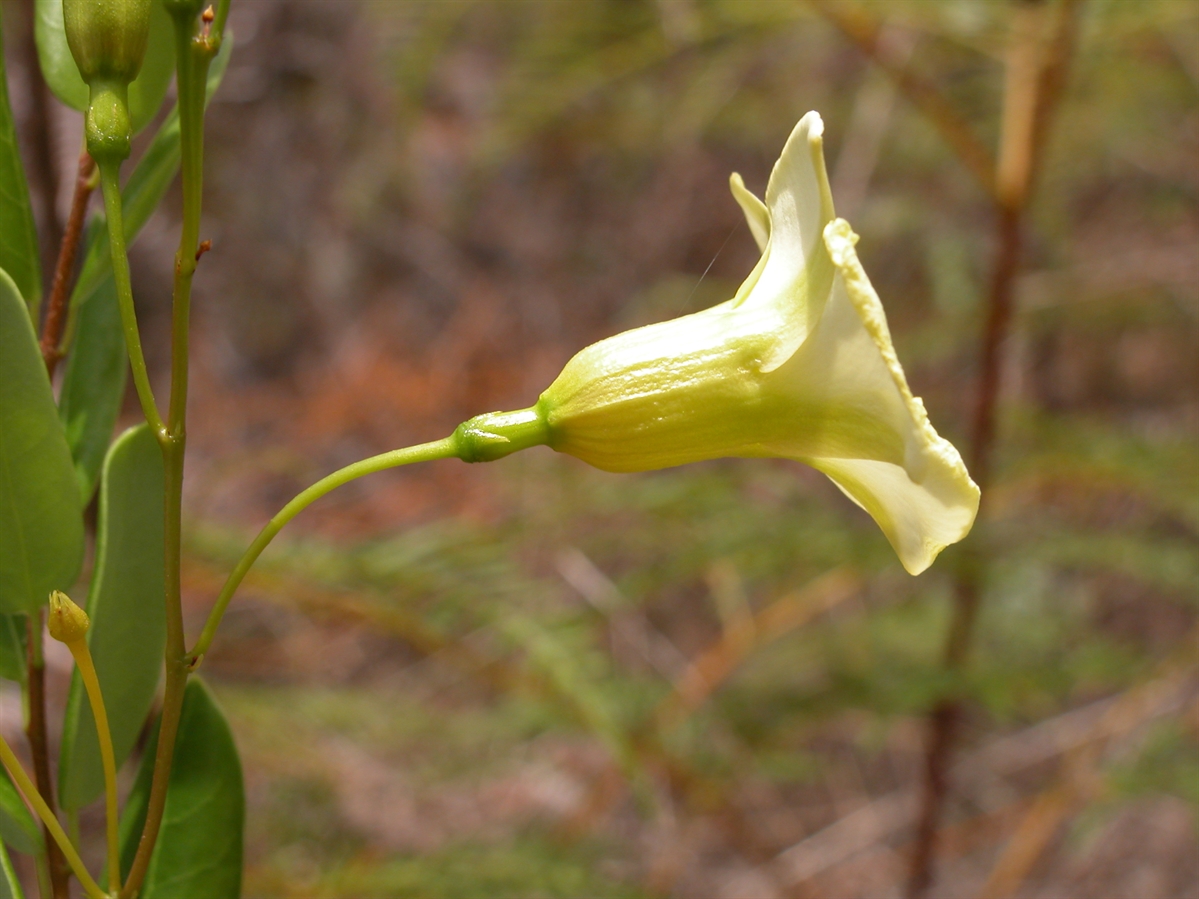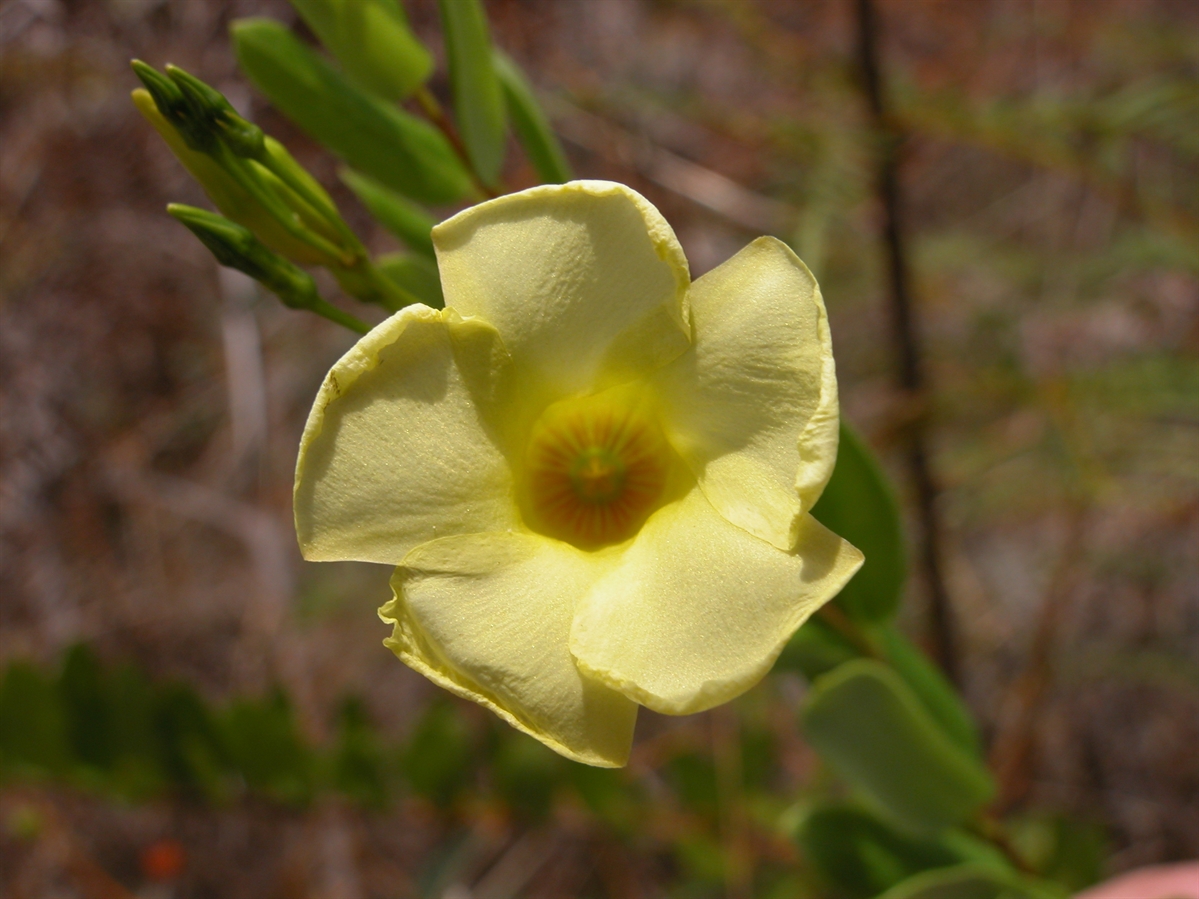Habit: Angadenia berteroi grows as a vine climbing over other vegetation and structures up to 1 m. in height. The leaves are arranged oppositely, ovate to linear/oblong and up to 7 cm in length. The leaf tip is mucronate and the margins are slightly revolute. Stems and leaves have a milky sap.
The complete, perfect, actinomorphic flowers are arranged in cymes. The calyx has 5 unfused green, ovate sepals. The corolla has 5 bright yellow petals that are fused at the base forming a tube up to 2 cm long. In the interior of the tube are red lines. At the end of the tube there are 5 lobes forming a pinwheel with the edges overlapping to one side. There are 5 stamens that are fused to the inside of the corolla tube. The ovary is superior, forming follicles in pairs, each up10 cm in length. The seeds are brownish and have tufts of hairs (pappus) that assist in aerial dispersal.
Habitat: Angadenia berteroi grows in in Dry Broadleaf Evergreen Formation Forests/Shrublands (coppice) and Pine Woodlands.
Distribution: Angadenia berteroi occurs throughout the island groupings of the Lucayan Archipelago, Cuba, Hispaniola.
Medicinal/Cultural/Economic usage: Angadenia berteroi is not known to be used medicinally in the Bahamas.


